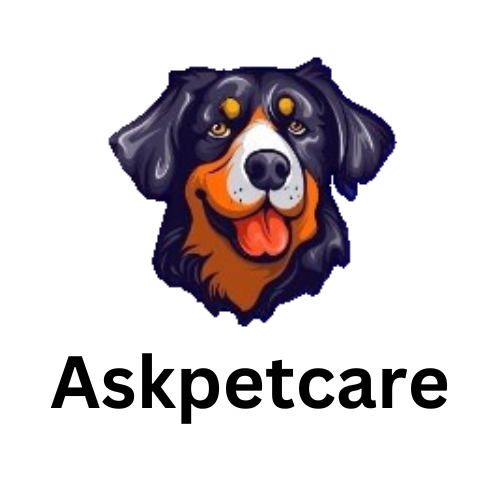German Shepherd skin allergies:
Hello dog lovers today I will explain in detail about the itchy German Shepherd Belly.
Hey dog lovers, let’s chat about something that bothers our furry friends – itchy bellies. You know, those times when your German Shepherd can’t stop scratching? Well, we’re going to talk about that.
Hello everyone who loves dogs! I’m Dr. Arif Aziz, and I’ve been taking care of pets especially dogs at my clinic for a long time, exactly 14 years! I’m here to share some valuable information with you that I’ve gathered from books during my study time written by experts in veterinary medicine (DVM) and MSC (Master of Science), as well as from my own experiences working with dogs.
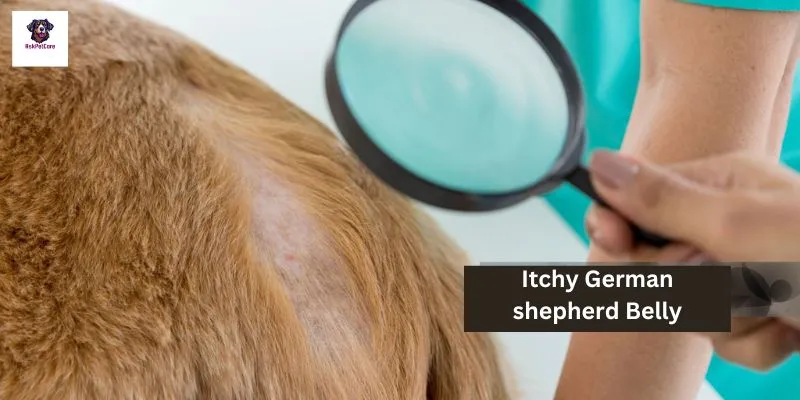
So, why is it such a big deal when our German Shepherds have itchy bellies? Well, it’s not just because they’re uncomfortable. Itchy bellies can actually be a sign that something’s not right with their health. So, it’s really important to pay attention to it to keep our pups happy and healthy.
But don’t worry! We’re here to help you out with all the info you need. We’ll talk about what causes the itchiness and how you can make your furry friend feel better. Think of this as your handy guide for dealing with those annoying itches in your German Shepherd’s belly. Let’s get started.
Understanding Itchy German Shepherd Bellies:
Let’s talk about why your German Shepherd’s belly might be feeling itchy.
- Allergies: Just like us humans, dogs can have allergies too. Whether it’s present in their food, something in the air, or something they touched, it can make their skin all itchy.
- Parasites: nobody likes these little things. Fleas, ticks, and mites can all cause major itchiness for your furry friend.
- Skin infections: Sometimes, bacteria or fungi decide to set up camp on your pup’s skin, causing irritation and, you guessed it, itchiness.
- Poor grooming habits: Hey, we’re not blaming anyone, but sometimes if your doggy isn’t keeping up with their hygiene routine, it can lead to some uncomfortable scratching.
How do you know if your German Shepherd’s belly is feeling the itch?
- Watch out for excessive scratching, licking, or chewing. If your pup can’t seem to leave their belly alone, it might be a sign something’s up.
- Keep an eye out for redness or inflammation. If your dog’s belly is looking a little more pink than usual, it could mean they’re feeling the itch.
- Check for hair loss or thinning. If your pup’s fur is starting to look a bit patchy, it might be because they’ve been scratching too much.
- Look for bumps, scabs, or sores. These could be signs of irritation or even infection, so it’s important to keep an eye out for them.
Now I explain how you can diagnose the Issue:
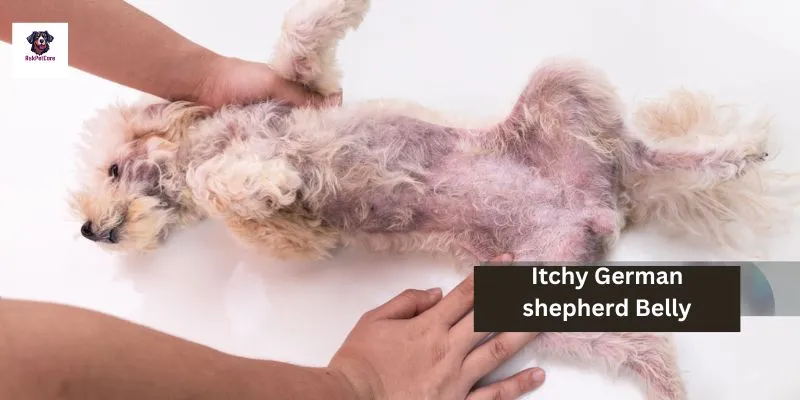
Why it’s a good idea to chat with a vet about your pup’s itchiness.
- Your vet’s like a superhero for your furry friend, able to figure out what’s causing the itchiness and how to fix it.
- They’ve got the know-how and the tools to give your pup a proper check-up and find out what’s really going on.
- Plus, they can recommend the best treatments to get your pup feeling better fast.
Let’s peek into what those vet visits might look like.
- Skin scraping: Sounds a bit scary, but it’s just a quick way for the vet to check for any pesky parasites or infections hiding out on your pup’s skin.
- Allergy testing: Your vet might want to do some tests to see if your doggy’s itchiness is being caused by an allergy to something in their environment or their food.
- Other tests: Depending on what’s going on, your vet might need to do some other tests to get to the bottom of the itchiness. Don’t worry, though, they’ll explain everything to you step by step.
Treatment for itchy German Shepherd belly:
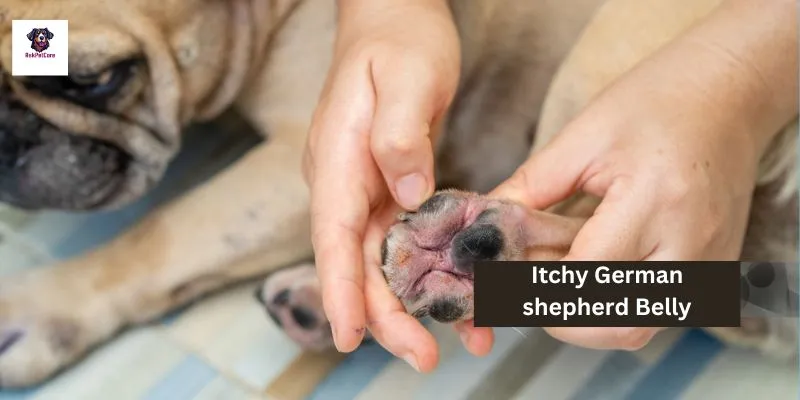
Now I will tell you the medicines that I used at my clinic for dog itching and irritations.
Rub-on stuff: Your vet might give you some creams or sprays to put on your pup’s itchy spots. Think of it like putting on some soothing lotion for your skin.
Pills and potions: Sometimes, your vet might suggest giving your pup some medicine to help with the itchiness. It could be antihistamines to calm down any allergies or antibiotics to fight off infections.
Sudsy solutions: Your vet might recommend using special shampoos or rinses to help clean up your pup’s skin and soothe the itchiness.
Now, what can you do at home to help your furry friend feel better?
- Pamper time: Giving your pup regular baths and brushing sessions can help keep their skin clean and healthy, which might help ease the itchiness.
- Food fixes: If your pup’s itchiness is because of allergies, your vet might suggest trying out some different foods to see if that helps. It’s like playing detective with your dog’s dinner!
- Keeping it clean: Making sure your home is flea-free and minimizing any allergens that could be causing trouble for your pup can go a long way in preventing itchiness. Think of it like giving your pup a safe and comfy environment to chill in.

Now I tell five common topical medications for treating itchiness in dogs, along with instructions on how to use them:
- Hydrocortisone Cream:
- Brand Name: Cortizone-10, Cortaid
- How to Use: Apply a thin layer of the cream directly to the affected area on your dog’s belly. Gently massage it into the skin until absorbed. Use it according to your veterinarian’s instructions, usually 2-3 times daily. Avoid getting the cream in your dog’s eyes or mouth.
- Chlorhexidine Spray:
- Brand Name: Vet One Chlorhexidine Spray, MalAcetic HC Spray
- How to Use: Shake the spray bottle well before use. Spray the affected area on your dog’s belly from a distance of 6-8 inches. Allow it to air dry. Use it 2-3 times daily or as directed by your vet. Avoid spraying near your dog’s eyes or mouth.
- Miconazole Nitrate Cream:
- Brand Name: VetOne Miconazole 1% Antifungal Cream
- How to Use: Clean the affected area and dry it thoroughly before applying the cream. Apply a small amount of the cream to the itchy area and gently massage it into the skin. Use it according to your vet’s instructions, usually 2 times daily. Avoid contact with your dog’s eyes or mouth.
- Lidocaine Spray:
- Brand Name: MaxiGuard Zn7 Derm Spray, Douxo Calm Micro-emulsion Spray
- How to Use: Shake the spray bottle well before use. Spray the affected area on your dog’s belly from a distance of 6-8 inches. Allow it to air dry. Use it as needed for relief of itching and discomfort, but follow your vet’s recommendations. Avoid spraying near your dog’s eyes or mouth.
- Neomycin Polymyxin B Sulfates Bacitracin Zinc Ointment:
- Brand Name: Triple Antibiotic Ointment
- How to Use: Clean the affected area and dry it thoroughly before applying the ointment. Apply a thin layer of the ointment directly to the itchy area on your dog’s belly. Gently massage it into the skin until absorbed. Use it according to your vet’s instructions, usually 2-3 times daily. Avoid getting the ointment in your dog’s eyes or mouth.
Now I tell five common oral medications for treating itchiness in dogs, along with instructions on how to use them:
- Antihistamines:
- Diphenhydramine (Benadryl):
- Dosage: Typically 1 mg per pound of body weight, given 2-3 times daily.
- How to Use: Administer the appropriate dose of Benadryl orally to your dog, either by giving them the tablet directly or hiding it in a treat. Follow your vet’s recommended dosage and frequency.
- Cetirizine (Zyrtec):
- Dosage: Typically 0.5 mg to 1 mg per pound of body weight, given once daily.
- How to Use: Administer the prescribed dose of Zyrtec orally to your dog, either by giving them the tablet directly or hiding it in food. Follow your vet’s recommended dosage and frequency.
- Diphenhydramine (Benadryl):
- Antibiotics:
- Amoxicillin:
- Dosage: Varies depending on the severity of the infection and your dog’s weight. Typically given 2-3 times daily.
- How to Use: Administer the prescribed dose of amoxicillin orally to your dog, either by giving them the tablet directly or mixing it with food. Complete the full course of antibiotics as directed by your vet, even if your dog’s symptoms improve.
- Cephalexin (Keflex):
- Dosage: Varies depending on the type and severity of the infection. Typically given 2-3 times daily.
- How to Use: Administer the prescribed dose of cephalexin orally to your dog, either by giving them the tablet directly or mixing it with food. Follow your vet’s recommended dosage and duration of treatment.
- Clindamycin:
- Dosage: Varies depending on the type and severity of the infection. Typically given 2-3 times daily.
- How to Use: Administer the prescribed dose of clindamycin orally to your dog, either by giving them the capsule directly or hiding it in food. Make sure your dog completes the full course of antibiotics as directed by your vet.
- Amoxicillin:
Remember to always consult with your veterinarian before administering any medications to your dog, as dosages and treatment plans may vary based on your dog’s individual health needs and condition.

Now I tell five common medicated shampoos or rinses for treating itchiness in dogs, along with instructions on how to use them:
- Malaseb Medicated Shampoo:
- How to Use: Wet your dog’s coat thoroughly with warm water. Apply Malaseb shampoo generously and massage it into the coat, focusing on the affected areas. Allow the shampoo to remain on the skin for 10-15 minutes before rinsing thoroughly. Use as directed by your veterinarian, typically 2-3 times per week initially, then as needed for maintenance.
- DermaBenSs Medicated Shampoo:
- How to Use: Wet your dog’s coat thoroughly with warm water. Apply DermaBenSs shampoo to the affected areas and lather well. Allow the shampoo to remain on the skin for 5-10 minutes before rinsing thoroughly. Use as directed by your veterinarian, typically 2-3 times per week initially, then as needed for maintenance.
- Douxo Chlorhexidine PS Shampoo:
- How to Use: Wet your dog’s coat thoroughly with warm water. Apply Douxo Chlorhexidine PS shampoo and massage it into the coat, focusing on the affected areas. Allow the shampoo to remain on the skin for 5-10 minutes before rinsing thoroughly. Use as directed by your veterinarian, typically 2-3 times per week initially, then as needed for maintenance.
- Vet’s Best Hot Spot Itch Relief Dog Shampoo:
- How to Use: Wet your dog’s coat thoroughly with warm water. Apply Vet’s Best Hot Spot Itch Relief shampoo to the affected areas and lather well. Allow the shampoo to remain on the skin for 5-10 minutes before rinsing thoroughly. Use as needed for relief of itching and irritation.
- Davis Benzoyl Peroxide Medicated Dog Shampoo:
- How to Use: Wet your dog’s coat thoroughly with warm water. Apply Davis Benzoyl Peroxide shampoo and massage it into the coat, focusing on the affected areas. Allow the shampoo to remain on the skin for 5-10 minutes before rinsing thoroughly. Use as directed by your veterinarian, typically 2-3 times per week initially, then as needed for maintenance.
Always follow the instructions provided on the product label or as directed by your veterinarian when using medicated shampoos or rinses on your dog. Be careful to avoid getting the product in your dog’s eyes, ears, or mouth, and discontinue use if any adverse reactions occur.
My other articles:
how-long-does-flea-allergy-dermatitis-last-in-dogs:
contact-dermatitis-in-german-shepherds-what-you:
Now I tell eight common home remedies and preventive measures for managing itchiness in dogs:
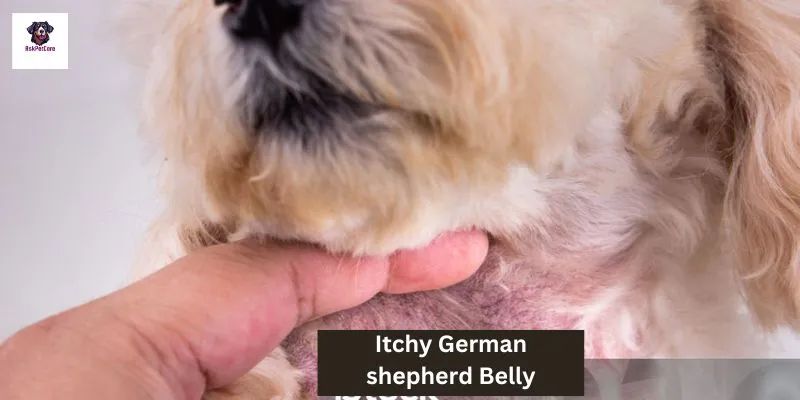
Oatmeal Bath:
-
- How to Use: Grind plain oatmeal into a fine powder and mix it with warm water to create a soothing oatmeal bath for your dog. Allow your dog to soak in the oatmeal bath for 10-15 minutes, then rinse thoroughly with clean water. Oatmeal helps to relieve itching and soothe irritated skin.
Apple Cider Vinegar Rinse:
-
- How to Use: Dilute apple cider vinegar with water (1 part vinegar to 1 part water) and pour the solution over your dog’s coat, focusing on the itchy areas. Allow the solution to air dry on your dog’s skin. Apple cider vinegar has antibacterial and antifungal properties that can help relieve itching and prevent infections.
Coconut Oil Massage:
-
- How to Use: Apply organic, unrefined coconut oil directly to your dog’s skin, focusing on the itchy areas. Massage the coconut oil into the skin gently to help soothe irritation and moisturize dry skin. Coconut oil has natural antibacterial and anti-inflammatory properties that can help alleviate itching and promote healing.
Omega-3 Fatty Acid Supplements:
-
- How to Use: Add omega-3 fatty acid supplements, such as fish oil or flaxseed oil, to your dog’s diet according to the manufacturer’s instructions or as recommended by your veterinarian. Omega-3 fatty acids help support healthy skin and coat, reducing inflammation and itching associated with allergies and other skin conditions.
Regular Grooming:
-
- How to Use: Establish a regular grooming routine for your dog, including brushing their coat regularly to remove dead hair, dirt, and debris. Use a gentle, hypoallergenic shampoo when bathing your dog to avoid stripping their skin of natural oils and exacerbating itchiness. Keep your dog’s coat clean and well-maintained to prevent skin irritation and infections.
Aloe Vera Gel:
-
- How to Use: Apply a small amount of pure aloe vera gel directly to the itchy areas of your dog’s skin. Gently massage the gel into the skin until absorbed. Aloe vera has soothing and anti-inflammatory properties that can help relieve itching and promote healing of irritated skin.
Baking Soda Paste:
-
- How to Use: Mix baking soda with water to create a thick paste, then apply the paste to the itchy areas of your dog’s skin. Allow the paste to dry before gently rinsing it off with water. Baking soda has mild anti-inflammatory properties and can help alleviate itching and irritation.
Epsom Salt Soak:
-
- How to Use: Dissolve Epsom salt in warm water (1 tablespoon of Epsom salt per cup of water) and soak a clean cloth or cotton ball in the solution. Gently apply the soaked cloth or cotton ball to the itchy areas of your dog’s skin, allowing the solution to soothe and relieve itching. Epsom salt has anti-inflammatory properties and can help reduce itching and inflammation in irritated skin.
These home remedies can provide temporary relief for mild cases of itchiness in dogs. However, if your dog’s itching persists or worsens, or if they develop other symptoms such as redness, swelling, or discharge, it’s important to consult with your veterinarian for proper diagnosis and treatment.
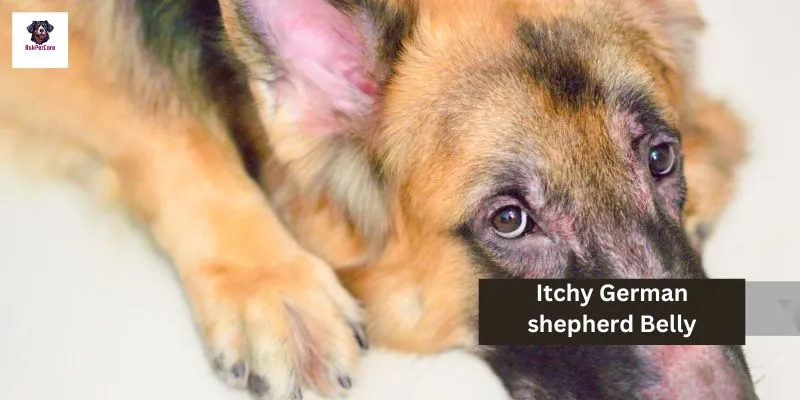
Now I tell you the techniques for Managing Itchy German Shepherd Bellies in the Long Term:
- Let’s keep an eye on things and stick to a routine.
- It’s super important to give your furry buddy consistent care and keep a close watch on their belly itchiness. Regular check-ups and monitoring can help catch any problems early and keep them under control.
- Making some changes for a happier, itch-free life.
- Time for some healthy eats: Feeding your pup a balanced diet can help keep their skin and coat healthy, reducing the risk of itchiness. Just like us, dogs need the right nutrients to thrive!
- Say no to creepy crawlies: Keep those pesky fleas and ticks away by using preventive treatments recommended by your vet. Nobody wants those critters making a home on their doggy!
- Clearing the air: If your pup has allergies, try to limit their exposure to allergens like pollen, dust, or mold. Keep their living space clean and cozy to minimize any sneezy, itchy moments.
- Stay on top of things and be ready to act.
- Keep an eye out for any changes in your pup’s behavior or belly itchiness. If you notice anything unusual, like more scratching or redness, don’t hesitate to reach out to your vet. It’s better to be safe than sorry, and catching any issues early can make a big difference in your dog’s health and happiness.
What are the allergy symptoms in German Shepherds?
Here are fifteen common allergy symptoms in German Shepherds:
- Excessive scratching, licking, or chewing of the skin
- Redness or inflammation of the skin
- Hair loss or thinning, especially in localized areas
- The presence of bumps, pimples, or pustules on the skin
- Persistent ear infections or inflammation
- Watery eyes or excessive tearing
- Sneezing or coughing
- Runny nose or nasal discharge
- Itchy or irritated ears, often accompanied by head shaking or rubbing
- Paw licking or chewing, leading to redness or irritation between the toes
- Hives or raised, swollen welts on the skin
- Chronic gastrointestinal issues such as vomiting or diarrhea
- A foul odor emanating from the skin or ears
- Behavioral changes such as restlessness or agitation due to discomfort
- Chronic respiratory issues such as wheezing or difficulty breathing
It’s important to note that these symptoms can vary in severity and may not always indicate an allergy. If your German Shepherd is experiencing any of these symptoms, it’s best to consult with a veterinarian for proper diagnosis and treatment.
-
How do you treat a German Shepherd’s itchy skin?
As a vet doctor, Itchy skin in German Shepherds can be caused by various factors like allergies, parasites, or skin infections. I would recommend first identifying the underlying cause of the itchiness through a thorough examination. Treatment options may include:
-
- Addressing any underlying medical conditions, such as allergies or infections, with appropriate medication prescribed by your veterinarian.
- Providing relief from itching with medicated shampoos or sprays specifically designed for dogs.
- Implementing dietary changes if food allergies are suspected, switching to hypoallergenic or novel protein diets.
- Avoiding potential allergens in the environment, such as certain plants or chemicals.
- Regular grooming to remove allergens and promote healthy skin and coat.
-
What foods are German Shepherds allergic to?
As a vet doctor, German Shepherds, like other dogs, can be allergic to a variety of foods. Common food allergens for dogs, including German Shepherds, may include:
-
- Beef
- Chicken
- Dairy products
- Wheat
- Soy
- Corn
- Eggs
- Some preservatives or additives found in commercial dog foods
-
Can I rub coconut oil on my German Shepherd?
As a vet doctor, yes, you can safely use coconut oil on your German Shepherd’s skin and coat. Coconut oil has natural moisturizing and soothing properties, which can help alleviate dryness and itching. It can also promote a healthy coat and skin. However, it’s essential to use coconut oil in moderation and avoid applying it to areas where your dog may lick it off excessively.
-
Do German Shepherds have sensitive stomachs?
As a vet doctor, Some German Shepherds may have sensitive stomachs, but it varies from dog to dog. Common signs of a sensitive stomach in German Shepherds may include vomiting, diarrhea, gas, or bloating after eating certain foods. As a vet, I would recommend:
-
- Feeding a high-quality, easily digestible diet tailored to your German Shepherd’s specific needs.
- Avoiding sudden changes in diet, as this can upset their stomach.
- Offering smaller, more frequent meals rather than one large meal.
- Consult with your veterinarian if you suspect your German Shepherd has a sensitive stomach, as they can provide personalized recommendations and rule out any underlying medical conditions.
Remember, every dog is unique, so it’s essential to monitor your German Shepherd’s response to different foods and treatments and consult with your veterinarian for personalized advice and guidance.
I hope you will thoroughly understand about the itchy German Shepherd Belly still any quarry contact me?
Here are some reference books that are considered authoritative on the topic of dog care, including nail care:
- “The Complete Dog Owner’s Manual” by Dr. Bruce Fogle
- “The Ultimate Guide to Dog Care: Everything You Need to Know to Keep Your Dog Happy and Healthy” by Amy Marder and Andrew Luescher
Disclaimer: This information is general advice only. Before starting any treatment or supplement with your pet, please consult your vet first for the best approach to getting your pet back to its best health.
Check with your veterinarian before giving any medication or supplement at home, to be sure it’s safe for your pup. Some substances can be toxic or harmful, including “dog-safe” medications and supplements if they are given at the wrong dosage.
